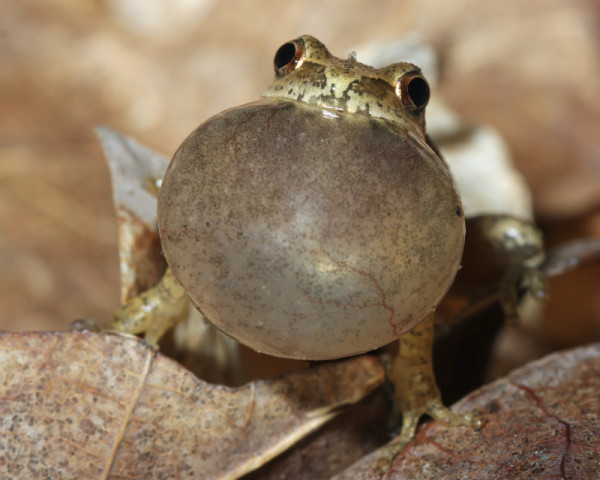#FrogFriday: Pavarottis of the pond
Written by Sharlene Shaikh, Pacific Conservation Research Assistant for WWF-Canada
One of the surest signs of spring is singing. And while most people might associate singing birds with the end of winter, frogs too, ring in the season with their unmistakable calls.
Spring is a particularly noisy season because, after the cold, wintry months, many animals rouse from hibernation and begin to vocalize in search of food and mates. As particularly promiscuous creatures, male frogs vocalize frequently in spring in their hunt to find a mate.

During central and eastern Canada’s spring thaw, one of the first frog species to be heard is the spring peeper (Pseudacris crucifer). Peepers hibernate to survive frigid winter temperatures (frogsicles anyone?). In early spring, once the ice starts to melt, amorous males rouse and sing as if they were Pavarotti’s of the Pond in an attempt to woo females.
Spring peepers are tiny frogs with big voices. Most vocal from March to May, there’s no better time than now to check out these well-camouflaged critters! As nocturnal feeders, spring peepers are most active at dusk or in the early morning. So head out at these times to the stream banks, ponds, or wetland areas where you can find them.
Although tiny – between 1 to 1.5 inches – spring peepers can be quite loud. Their unique high-pitched mating calls, a series of repeated “peeps” are easily discernible. It’s not uncommon in spring to encounter a group, or “army” of spring peepers. These frog gatherings produce a beautiful sleigh bell-like chorus. During March, we are celebrating so tweet to let us know if you hear one! Three cheers (or ‘peeps’) to the start of spring and to the spring peeper!
Find out more about WWF’s work to support healthy waters for frogs and other freshwater species.
